FORMER COLTS PUNTER

HUNTER SMITH RETURNS TO HIS ROOTS AND FINDS HIS FUTURE
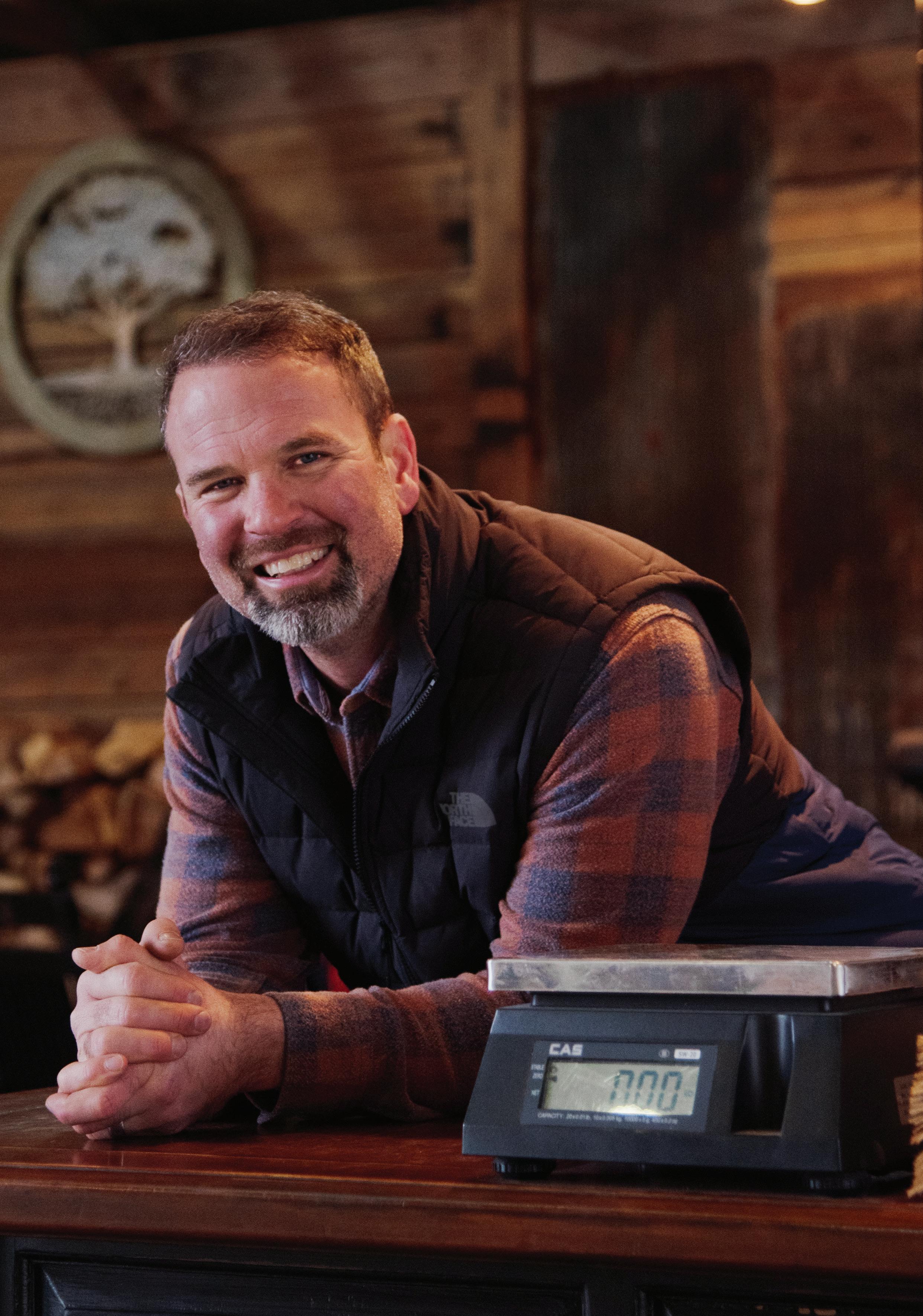


FORMER COLTS PUNTER

HUNTER SMITH RETURNS TO HIS ROOTS AND FINDS HIS FUTURE


I’m new to the Indiana Connection team, so I recently met everyone on staff who works to produce the magazine each month — and I thought you might enjoy getting to know a bit about them, too. Over the next few issues, you’ll learn more about each person, their role and why they’re so important to the team.
First up is Holly Huffman, who has been part of the magazine for nearly 17 years! Take it away, Holly:
I have a varied role. On the communication side, I work on Indiana Connection designing and editing pages; coordinate social media for both the magazine and its publisher; perform website updates; and other tasks. On the events side, I help coordinate events at our office and at off-site venues. I also manage the facilities at our office. I love the variety of my job — no day is ever the same!
Three facts about Holly:
• I grew up in Gaston, Indiana, where my family is located. I currently reside on the northside of Indianapolis. I’m the “black sheep” who moved to the big city!
• I graduated from Ball State University with both a bachelor’s and master’s degree in public relations. I am also a Certified Cooperative Communicator (CCC) through the National Rural Electric Cooperative Association (NRECA).
• I LOVE coffee! I MUST have my daily cup (well … maybe two) to get the day going. My favorite Starbucks order is a skinny vanilla latte.
If you’ve ever met Holly, you know: She’s a true gem.
Stephanie Groves Editor sgroves@indianaec.orgEnter our contest (info below) to win a $25 gift card to Starbucks to try out Holly’s favorite!
On the menu: June: Recipes using Jell-O, deadline April 1. July: Tropical fruit recipes, deadline May 1. If we publish your recipe on our food pages, we’ll send you a $10 gift card.
Giveaway: Win a $25 Starbucks gift card so you can order Holly’s favorite drink! Visit indianaconnection.org/talk-to-us/contests or send your contact information to the address below. The deadline to enter is March 31.

Three ways to contact us: To send us recipes, photos, event listings, letters and entries for gift drawings, please use the forms on our website indianaconnection.org; email info@indianaconnection.org; or send to Indiana Connection, 8888 Keystone Crossing, Suite 1600, Indianapolis, IN 46240-4606.
VOLUME 72 • NUMBER 9
ISSN 0745-4651 • USPS 262-340
Published monthly by Indiana Electric Cooperatives
Indiana Connection is for and about members of Indiana’s locally-owned, not-for-profit electric cooperatives. It helps consumers use electricity safely and efficiently; understand energy issues; connect with their co-op; and celebrate life in Indiana. Over 304,000 residents and businesses receive the magazine as part of their electric co-op membership. Member’s cost per issue is approximately 32 cents, plus postage.
CONTACT US:
8888 Keystone Crossing, Suite 1600 Indianapolis, IN 46240-4606 317-487-2220
info@indianaconnection.org
IndianaConnection.org
INDIANA ELECTRIC COOPERATIVES OFFICERS:
Randy Kleaving President
Steve McMichael Vice President
Dr. Richard Leeper Secretary/Treasurer
Tom VanParis Interim CEO
EDITORIAL STAFF:
Stephanie Groves Editor
Richard George Biever Senior Editor
Holly Huffman Communication Support Specialist
Lauren Carman Communication Manager
Kiley Lipps Graphic Designer
Ashley Curry Production and Design Coordinator
Amber Knight Creative Manager
Mandy Barth Vice President of Communication
ADVERTISING:
American MainStreet Publications
Cheryl Solomon, local ad representative; 512-441-5200; amp.coop
Crosshair Media 502-216-8537; crosshairmedia.net
Paid advertisements are not endorsements by any electric cooperative or this publication.
UNSOLICITED MATERIAL:
Indiana Connection does not use unsolicited freelance manuscripts or photographs and assumes no responsibility for the safe-keeping or return of unsolicited material.
SUBSCRIPTIONS:
$12 for individuals not subscribing through participating REMCs/RECs.
CHANGE OF ADDRESS:
If you receive Indiana Connection through your electric co-op membership, report address changes to your local co-op.
POSTAGE:
Periodicals postage paid at Indianapolis, Indiana, and at additional mailing offices.
POSTMASTER:
Send change of address to: Indiana Connection, 8888 Keystone Crossing, Suite 1600, Indianapolis, IN 46240-4606. Include key number.
No portion of Indiana Connection may be reproduced without permission of the editor.




29 BACKYARD
The tuliptree: Indiana’s state tree (NOT IN ALL EDITIONS)

30 RECALLS

Gas range recalled for carbon monoxide danger (NOT IN ALL EDITIONS)


Hunter Smith is ready to greet shoppers at WonderTree Farm. After a career in the NFL, Smith purchased the land in Zionsville because he wanted to raise his kids around animals. Now, the farm’s grown into what he says is the future of sustainable agriculture which harks back to the past.


www.duboisrec.com

CONTACT US
Office: 812-482-5454
Billing Dept.: 812-482-1664
Operations Dept.: 812-482-1188
After Hours: 812-482-5455
Fax: 812-482-7015
CEO AND GENERAL MANAGER
Joe Henson
OFFICE HOURS
7 a.m.–4 p.m., Monday-Friday
7 a.m.–3:30 p.m. for Line Dept.
STREET ADDRESS 1400 Energy Drive Jasper, IN 47546
MAILING ADDRESS
P.O. Box 610 Jasper, IN 47547-0610
EMERGENCY POWER OUTAGES
To report service interruptions, call: 812-482-5454 (during regular hours) or 812-482-5455 (after hours) day or night. Please have your account number ready when reporting outages.
BOARD OF DIRECTORS
Brad Knies, President
Richard A. Wendholt, Vice President
Randall L. Stemle, Secretary-Treasurer

Mark Montgomery
Andy Schwenk
Steve Speedy
David Rudolph
KEY STAFF
Craig Adams
Manager of Finance
Matt Brames
Manager of Engineering
Greg Dilger Engineering Project Manager
Ruth Hopf
Billing Supervisor
Patrick Lichlyter
Manager of Operations
CUSTOMER SERVICES
Budget billing SmartHub
Pay by Phone 24/7
Drive-thru window
Night depository
Medical account watch This
Spring is a fickle season that brings nature’s renewal of buds and blooms to the trees and fields and also brings dark, powerful rolling storms that can wreak havoc. From 2016 through 2020, the National Weather Service recorded 28 deaths, 133 injuries and over $64 million in property and crop damage from weather events in Indiana alone.
Weather disasters can occur yearround, but most of the worst storms Indiana receives come in the spring. Here are some tips for staying safe before and after a storm hits.

• Make sure your cell phone is charged. Consider purchasing an external battery charger for your phone to charge it without electricity.
• Have a battery-operated radio available so you can stay updated on the latest weather watches and warnings.
• Have an emergency kit ready and create a family communication plan.
• Unplug appliances and other electrical items, such as
computers. Damage can occur from power surges caused by nearby lightning strikes.
• If you are driving and come upon fallen power lines, turn around. Never drive over or around fallen lines.
• If a downed power line falls on your vehicle, stay in the vehicle. Call 911. Exit only if your life is in immediate danger from a fire or other reason. If so, jump clear of your vehicle, being certain to never touch the vehicle and the ground at the same time; then, shuffle away, keeping your feet together at all times.
• While checking for damage outside your home, be aware of hazards from exposed nails, broken glass and broken tree branches dangling on other limbs.
• Since downed power lines could still be energized, do not touch them or any objects in contact with them. Call 911 to report the downed lines.
When the spring storms arrive, know how to keep yourself, your family and your property safe from harm during severe weather.
JOE HENSON CEO and General ManagerService charge
Single-phase $31
Three-phase $47
Energy charge
The first 500 kWh at $.10522 /kWh
The next 2,500 kWh at $.09772/kWh
All remaining kWh at $.09462/kWh
Power cost tracker
All rate classes
All kWh at $0.0085/kWh
Security light
If you have a security light, add:
175-watt mercury vapor $8.32/month
100-watt sodium vapor $7.50/month
100-watt metal halide $8.75/month
70-watt LED $7.50/month
Electric bills due by the 20th of each month. Members who pay by the 15th will be entered in the monthly drawing for a $50 bill credit.
(See details at right.)
Visit www.duboisrec.com for easy ways to pay your electric bill online.
It’s easy to enter our monthly $50 drawing! All Dubois REC members who pay their bill by the 15th of the month, using any payment option, will be automatically entered in the $50 monthly drawing. Members who pay by ACH/bank draft and recurring payments are also automatically included in the drawing. (Delinquent payments are not eligible.)
The winner will be notified, and his or her name will be published here.
FEBRUARY’S WINNER: Jesse Hartwick, Celestine, IN
Huntingburg Event Center • 200 W. 14th St., Huntingburg, IN Doors open at 5 p.m., bingo from 6-7 p.m., business meeting at 7 p.m. with prize drawing to follow.
Free refreshments and door prizes for all in attendance.
Watch DuboisREC.com for more details.
Mark Montgomery – District 3
David Rudolph – District 4
Steven Speedy – District 6
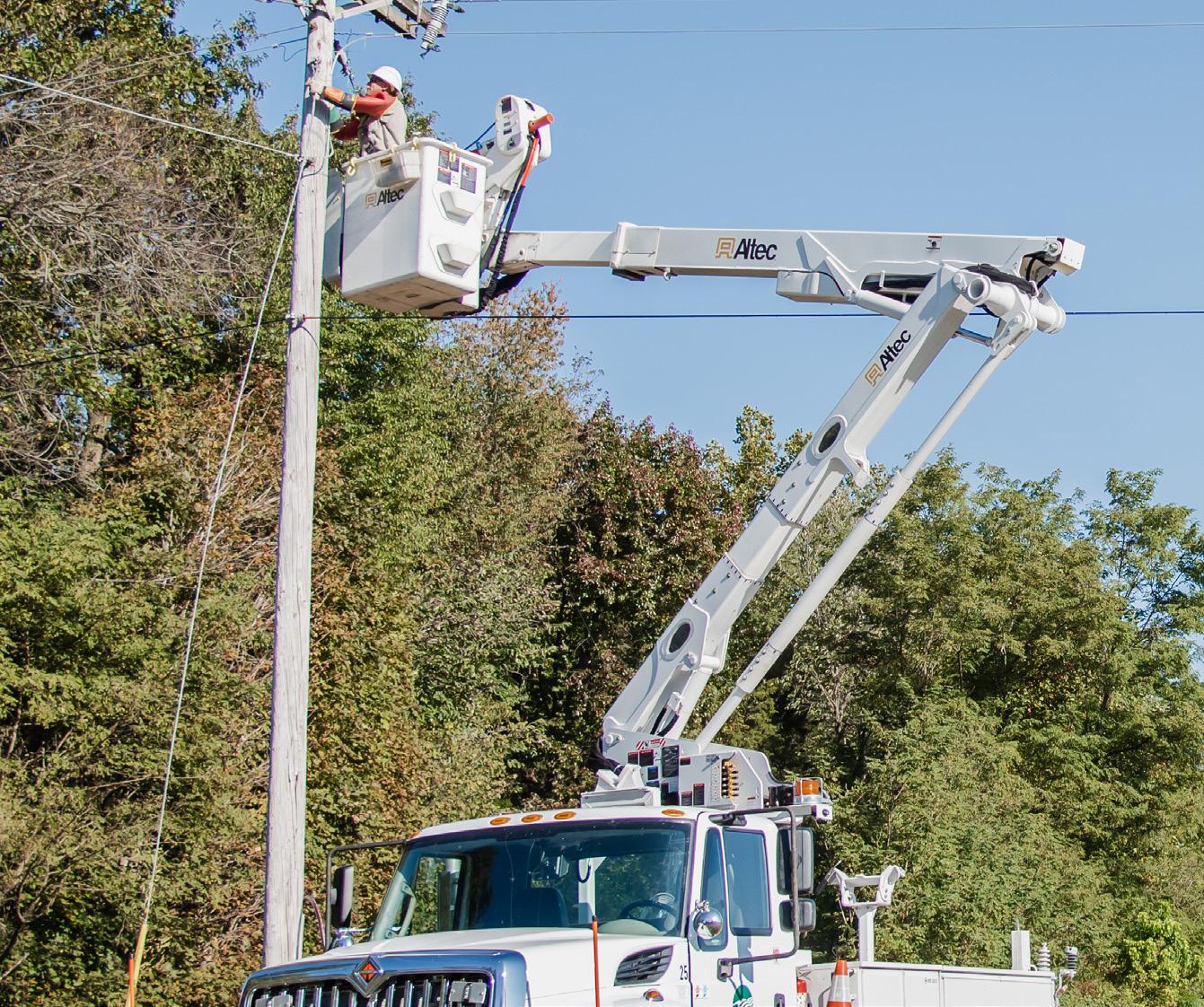
When a major storm causes widespread damage, electricity cannot be restored with the flip of a switch. Here’s how it’s done methodically, efficiently and safely.
Every electric cooperative follows a basic principle when it comes to restoring power: priority is given to the lines that get the most back in service the quickest. Here’s a basic order of repair:
Transmission lines. These high voltage lines carry electricity from generating plants to substations (or between substations). Since tens of thousands of people could be served by one transmission line, damage here needs to be taken care of first.
Substations. These electrical facilities contain equipment that switch or regulate the voltage of electricity. They lower the voltage from the transmission lines so the electricity can be transmitted through the distribution lines. Problems here can affect thousands of consumers.
Main distribution lines. You see these along roadways. They carry electricity from the substations to groups of consumers, like towns or housing developments.
Tap lines. These lines run from the main distribution lines to utility poles and underground transformers outside houses or buildings.
Individual service. These lines run from the transformer on the pole along the road or street or underground box to the consumer’s electric meter on the side of the home or business.
MARCH 12 - Daylight Saving Time begins. “Spring forward” and move your clocks ahead one hour on this date. This is also a great time to check the batteries in your smoke detectors!
MARCH 20 - Spring officially begins MARCH 24 - Deadline to enter the 2024 Student Art Contest

Stop by the Dubois REC office or drive through and pick up your 2023 Student Art Calendar and Festival Guide while supplies last.


Follow these simple steps to sign up for automatic bank draft and have your electric bill paid each month from your designated bank account. This is a great way to save time and avoid late fees!
1 2 3
The Budget Billing Program offered by Dubois REC is a method of equalizing electric bill payments over a oneyear period.
entire amount is due at that time. If there is a credit balance on the May billing, the account will be credited for that amount.
When you receive your monthly electric bill, please call the pay-by-phone number located on the top left corner of your statement. (This is a 24/7 hotline for making payments.)
When prompted by our phone system, enter your account number (which can also be found on your statement).


Make the payment and follow prompts on the automatic system to save your payment method for future recurring payments.
NOTE: You will still receive a statement each month indicating the amount that will be deducted from your bank account.
Dubois REC bills are printed near the first of the month and always due on the 20th of the month. If the 20th falls on a weekend or a holiday, the next business day will be used.
The program is an equalization of the payment for the member’s convenience, with 11 months of payment being the same. Budget billing does not reduce the annual cost of electricity and is for residential accounts.
The plan starts with the bill sent in June. The bill for May of the following year is adjusted for the difference between charges and actual use. If a balance is due on the May billing, the

Members must reside in our service area for at least 12 months to be eligible for this program.
If you are interested in the budget billing program, call Debbie at 812482-5454 and give your name and account number, or drop us a note. We will contact you by letter and provide you with the details of the program. Deadline for budget billing applications is April 15.

SmartHub allows you to:


• Pay your bill and monitor your electric use from the website or from your iPhone, iPad or Android device












• Add notifications that you would like to receive by email or text message



• Compare daily, monthly and yearly energy use with analysis tools

• Contact your cooperative
• Report an outage
If your email address, mailing address or phone number has changed, update your Dubois REC account info right through SmartHub. Find the app in the Google Play store or at www.duboisrec.com.


A few tax changes passed last year might cause you to turn your head — toward the local car dealership.
The Inflation Reduction Act passed by Congress last year includes tax credits for the purchase of electric vehicles. People who may be interested in buying an EV could be in for a nice tax credit for doing so. However, there are requirements, some of which are still being implemented and need clarification, to get a full or even partial tax credit. The good news is that people will have time to consider the credits, which are enacted through 2032.
The available tax credits can be broken down into three categories, and each has different credits and qualifications. It’s important to note that the credits are nonrefundable; the credit that people and businesses get back cannot be more than what is owed in taxes. Still, the credits can help make an EV more affordable.

This offers a credit of up to $7,500 for qualifying purchases. There are income requirements, as well as specific requirements for the vehicle. Some of the EV requirements are still being worked out; as a result, not all vehicles will be eligible for a tax credit.
Individuals who buy a qualifying used EV can receive a portion of the sale price as a tax credit of up to $4,000. Vehicles purchased before 2023 do not qualify. The used EV must be purchased from a licensed dealer for $25,000 or less. There are also income limits and other requirements for the EV, as well as for the purchase.

Businesses and tax-exempt organizations can receive up to
a $7,500 tax credit for qualified vehicles with gross vehicle weight ratings of under 14,000 pounds and $40,000 for other vehicles. As with the other credits, there are additional requirements for the organization and vehicle to qualify.
You should consult a qualified tax professional to learn more about the specific requirements for the tax credits. To learn more, visit IRS.gov for details and requirements. You also can contact your local electric cooperative’s energy advisor to learn more about electric vehicles.
by TJ Garner Chief Operating Officer Fulton County REMC
The kids are grown and out of the house. And, as hard as it may be to let go, it’s probably time for their bathroom with the SpongeBob ceiling border and yellow walls to grow up, too. Or, maybe you’re in the opposite position and want your children to delight in a bathroom decorated just for them. Here are some surprisingly simple DIY projects to help refresh a bathroom without breaking the bank:
A basic refresh of a bathroom (or any room) begins here. A fresh coat of paint hides scuff marks and gives the room an instant lift. Start with wall putty and sandpaper to patch up nicks or old nail holes. Pick up new brushes, roller covers and drop cloths and get painting. Satin or semigloss paint works best here.
Even as gallon prices rise, painting is still one of the most economical, value-adding DIY projects. It’s also a great way to “mature” a kid’s bathroom and ditch childlike designs and colors. Don’t skip the ceiling — if it has that dusty old popcorn texture, scrape it off. Either way, prime and paint your bathroom ceiling with a coat of bright white.
Speaking of the ceiling, bathroom fans are an often-forgotten necessity. Vacuum the grates and interior blades or upgrade to a quieter, more efficient model. Hardware swaps are simple, so replace outdated drawer knobs and pulls with modern designs and finishes.
Also consider new towel racks, hooks, toilet paper holders and shower curtain rods — they’re often packaged together in the same design family. Round out the look with a new faucet and showerhead. Consider hiring a pro for these jobs if you’re not the handy type. If you are, pick up some plumber’s tape, pliers or a strap wrench to prevent marring metal fixtures.
by Charlie GillmanToday’s light fixture designs are almost endless, from modern shapes and materials to retro-inspired options such as visible filament Edison bulbs. Long-life, efficient and cool-to-the-touch LED bulbs are the way to go. Switch out fluorescents or incandescents for warmer bulb colors to make morning mirror time a lot less harsh. Try popular sconce fixtures next to your mirror(s) to reduce glare even more.
Turn a boring, buildergrade mirror adhered to the wall into something special. Paint or stain inexpensive wood molding or trim, then nail or glue it around the mirror’s edges to create a frame. Use tile and grout-safe cleaners to freshen up stained or

moldy grout, or use a grout removal tool and apply a new bead around sinks and shower walls.
Keep the momentum going by making your bathroom sparkle from top to bottom. Use cleansers and scrubbing pads specially designed for bathrooms to battle soap scum around sinks, tubs and glass shower doors. If you have hard water, clean faucets and showerheads with a solution that combats mineral deposits. Add some final touches with a new shower caddy, matching towels and a new shower curtain and liner.
VISIT YOUR LOCAL DO IT BEST STORE OR DOITBEST.COM for thousands of the best home improvement products, including wallpapering supplies.
Charlie Gillman is the owner of Gillman Home Center, with locations throughout central Indiana. He’s a member-owner of Do it Best, a Fort Wayne-based cooperative of thousands of hardware stores, home centers and lumberyards throughout the U.S. and around the world.
(This article is for informational purposes only. Indiana Connection and Do it Best Corp. assume no liability for the accuracy or completeness of the information contained herein, or for injuries, property damage, or the outcome of any project.)


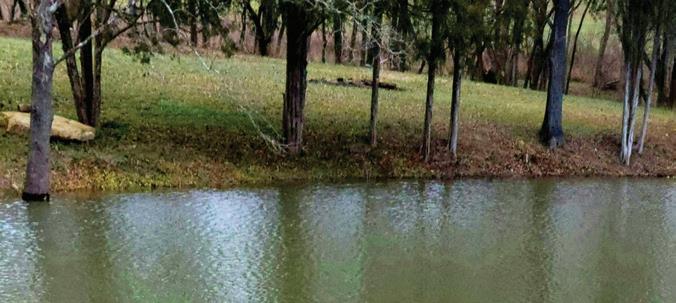
The Indiana Department of Child Services (DCS) needs loving, temporary homes across the state of Indiana for children of all ages — especially teens and sibling groups. DCS is looking for people who are willing to open their hearts and their homes to foster youth as they work toward safely reuniting with their families. If you’ve thought about providing that safe place for a youth or sibling pair, please inquire online at indianafostercare.org.

The art contest to illustrate the 2024 Cooperative Calendar of Student Art draws to a close this month. A first-place winner will be selected for each grade, K-12, and will receive $200. The winning artworks will illustrate the cover and the 12 months inside.
Entries for the Cooperative Calendar of Student Art Contest are due in the Indianapolis office of Indiana Connection by 3 p.m. on Friday, March 24.
One “Artist of the Year” will also be selected from among the first-place winners and will earn an additional $100. Additional artists from each grade will be selected for honorable mention awards and will receive $75 and have their works printed in a special section of the calendar.
The contest is open to Indiana public, private or home-schooled students in kindergarten through 12th grade during the 2022-23 school year. A complete set of rules and required entry forms are available at indianaconnection.org/for-youth-art-contest.

Please contact Cheryl Solomon, 847-749-4875 or cheryl@amp. coop, for other small business advertising opportunities in Indiana Connection.
Wabash County is named after Indiana’s famed “official” river, the Wabash. The river flows through the heart of the county and the city of Wabash, the county’s seat.
While the Wabash River has its place in Indiana culture and history, the county and city have had their share of the limelight. One instance came on March 31, 1880. That was the day Wabash became the “First Electrically Lighted City” in the world.

On that dark night, thousands of people came to see what was billed as the dawn of a new age. All eyes were turned to the county courthouse on the bluff above downtown Wabash. At 8 p.m., four electric “arc” lights, mounted to the flagstaff atop the courthouse’s clock tower, were powered up.
Like most towns at the time, Wabash was lit by gas streetlamps. Electricity was still a scientific novelty to most people. Thomas Edison had successfully tested his incandescent lightbulb six months earlier, but the leaders of Wabash saw the potential and began investigating the possibility of lighting the town electrically.
For several years before Edison, Charles F. Brush, an inventor in Cleveland, had been innovating electric arc light and electricity generation. In their search for new lighting, Wabash leaders crossed paths with Brush and
agreed to pay him $100 to test his lights. The decision was made to mount the lights in one central location — atop the courthouse clock tower dome.
As the clock struck 8 p.m. on that night, a steam engine began turning Brush’s dynamo, generating electricity to the lights. A reporter from the Fort Wayne Daily Sentinel described what happened next: “… the thousands of eyes that were turned toward the inky darkness over the courthouse saw a shower of sparks emitted from a point above them, small steady spots of light, growing more brilliant, until within a few seconds after the first sparks were seen, it was absolutely dazzling; a loud shout went up from the crowd, the band began to play …”
Some folks believed the lights would bring a transformation to agriculture, too. In its issue dated May 14, 1880, the weekly Wabash Plain Dealer conjectured that crops might double in size from the extra light during the night. The article included a fanciful woodcut illustration of men harvesting ears of corn with ladders and handsaws. “We look for a crop on the Wabash bottom lands near town this autumn that
FOUNDED: 1835
NAMED FOR: Wabash River POPULATION: 30,976
COUNTY SEAT: Wabash
INDIANA COUNTY
NUMBER: 85
will even excel the illustration … and astonish the world,” the Plain Dealer reported. “Electricity is surely destined to revolutionize agriculture.”
While electricity did revolutionize agriculture, it wasn’t in this way, but in how Wabash County REMC (now Heartland REMC) and other electric co-ops electrified and modernized American farms 5560 years later.

FRIED PORK TENDERLOIN SANDWICH

Marilles Mauer, Greensburg, Indiana
1 lb. pork tenderloin
2 eggs
2 cups buttermilk
2 cloves garlic, minced
1 t. salt
½ t. black pepper
⅛ t. cayenne pepper
1 cup flour
Oil for frying (like vegetable, peanut or canola oil)
For breading:
10 saltine crackers, crushed
Cut the pork tenderloin into 4 pieces. Place 1 piece of pork at a time in a plastic bag, and using a meat mallet, pound meat to ¼-inch thickness. Mix together eggs, buttermilk, minced garlic, salt, and black and cayenne peppers in a large bowl. Add tenderloin pieces and stir to coat each piece. Place bowl in the fridge and marinate 4-12 hours. Remove from fridge and pour the buttermilk mixture into a shallow bowl. Set up another bowl with the flour in it. In a third bowl, create the breading
using the crushed saltines, panko breadcrumbs, salt, pepper, garlic and onion powders and paprika. Wipe excess buttermilk off one piece of tenderloin, then dip it into the flour, covering both sides. Next, dip it into the buttermilk mixture and then into the breading, pressing the breading firmly into the pork. Set aside, repeat with the remaining pieces of pork, and let them all sit for 10 minutes. Heat ½-inch of oil in a skillet to 360 F. Fry each tenderloin piece for about 3 minutes per side,
1 cup panko breadcrumbs
½ t. salt
⅛ t. black pepper
⅛ t. garlic powder
⅛ t. onion powder
⅛ t. paprika
For sandwich: Buns
Toppings of choice, like lettuce, sliced tomatoes and mayonnaise
turning once, until breading is golden brown. Remove to a wire rack or baking pan lined with paper towels to drain. Once drained, add one piece of pork to a bun and add toppings of choice. Makes 4 sandwiches.
2 cups flour
1 t. baking powder
¼ t. salt
¼ cup sugar
2 eggs
1½ cups milk
Oil for frying (like vegetable, peanut or canola oil)
1 cup powdered sugar for topping

In a bowl, combine the dry ingredients. In another bowl, combine the eggs and milk. Slowly stir the dry ingredients into the wet ingredients until smooth. Heat ½-inch of oil in a heavy skillet or large saucepan for 2-4 minutes until it is ready for frying, about 375 F. Pour ½ cup of the batter into a squeeze bottle or a plastic baggie with one corner cut off. Drizzle the batter into the hot oil in a back-and-forth pattern. Fry each side of the funnel cake until golden brown, turning once. Drain on a paper towel and dust with powdered sugar. Repeat the process until all the batter is used.
Kaela Anderson, Underwood, Indiana
1 pre-made, unbaked
9” pie crust
½ cup sugar
½ cup brown sugar
¼ cup cornstarch
1 cup heavy cream
1 cup half-and-half (or use another cup of heavy cream)
½ cup butter, cubed
1 T. vanilla extract
Cinnamon and nutmeg for dusting
Preheat oven to 425 F. Bake the pie shell for 15-20 minutes — you can use pie weights to keep the shell in place in the dish. Lower the oven temperature to 375 F. In a saucepan, use medium heat to bring sugar, brown sugar, cornstarch, heavy cream and half-and-half to a boil. Stir frequently. Once the mixture starts to boil, reduce heat and simmer for 2-3 minutes until thickened. Remove mixture from heat and immediately stir in butter and vanilla. Dust the bottom of the pie crust with nutmeg. Pour the filling in the pie crust and dust the top with cinnamon. Bake for 20 minutes at 375 F. The pie will jiggle slightly but firm up once cooled. Cool completely and then refrigerate for a minimum of 2 hours before serving — although overnight is best.
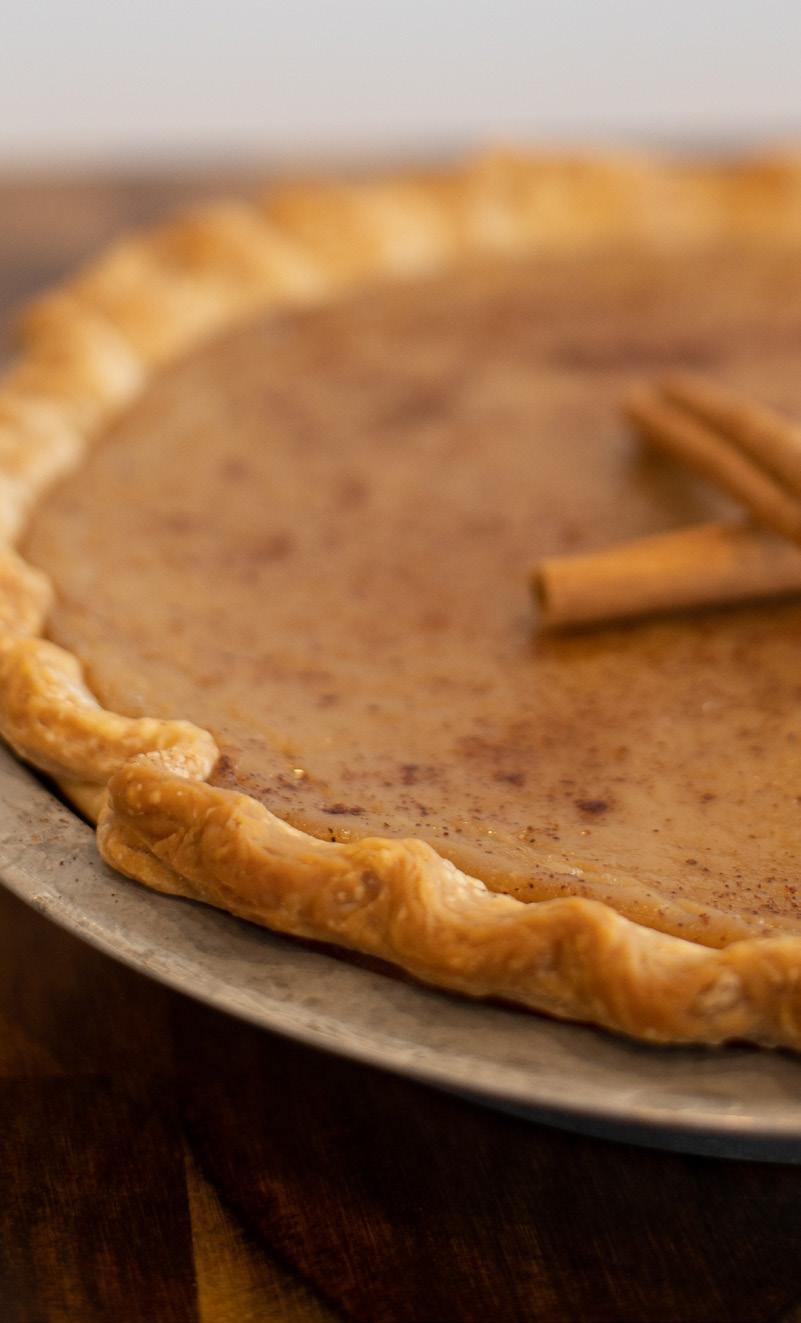
The 1894 Lodge bills itself as a “place where everyone comes to drink, eat and have fun.” The original structure, nestled on E. Main Street in New Washington, was built in 1894 (hence the name) as a Masonic temple. It later served as a school and even a movie theater before being transformed into its current iteration in 2015.
Managed by Logan Hostettler, The 1894 Lodge offers elevated homestyle cooking as well as an interesting array of craft beers and a nicely stocked bar. The restaurant’s leadership prides itself on the fact that the business grows its own produce and herbs, and actively supports local farmers.
With its tasty fare and hometown hospitality, the restaurant has earned its place as a must-visit in Clark County — and rumor has it that it’s also become the go-to spot for many local firefighters to dine.

Open for dinner from 5-9 p.m. Wednesday through Saturday, The 1894 Lodge offers two different dining rooms as well as a lively bar area. For a more formal meal, you can opt for the main dining room, which boasts a gas fireplace, exposed brick and original floors. If you’re interested in laid-back dining, there’s also a lively
lounge area featuring a reclaimed wood bar and televisions that are usually airing the sports games of the night.
As for the cuisine, there are rotating specials to enjoy that might include a “blue plate” offering like Salisbury steak with mashed potatoes and mushroom gravy, a “handheld of the week” and even an “egg roll of the day.”
Indiana Connection’s Creative Manager Amber Knight made a trip to The 1894 Lodge, and she was enamored with the restaurant’s charm, service — and of course, the food. “The 1894 Lodge has some of the best food around and the menu is so fun,” Knight said, adding, “Their burger was one of the best I’ve ever had — the beef sourced from local farmers makes a huge difference. And don’t forget dessert!”
The hamburger Knight mentioned is the “1894 Lodge burger,” described on the restaurant’s menu as a “half-pound 80/20 burger cooked to order, dressed with lettuce, tomato, onion and pickle on a brioche bun” and served with golden, crispy fries.

Main course options include fish and chips made with cod loins, “Lodge fried chicken,” as well as juicy steaks. If you have a sweet tooth, you won’t be disappointed in the rotating dessert features — if there’s a cheesecake available, odds are good that it’s stellar.
The next time you’re traveling on I-65 and looking for a place to dine, consider popping by The 1894 Lodge. Or, check out the restaurant’s Facebook page (facebook.com/ 1894Lodge), and when one of their “blue plate” specials catches your eye, make the drive to this unique dining destination. It’ll be worth it.

A wintry wind blustered around the big red-sided barn at WonderTree Farm, just north of Zionsville. Inside, Hunter Smith pulled another wedge from a neatly stacked cord of firewood and deposited it into a pot-bellied stove.
The 105-year-old restored relic is the newest addition to the farm’s store. Set in a corner off the barn’s central aisle, the wood burner creates what Smith noted is “the coziest nook on the farm.”
Customers, friends and suppliers — many who are one and the same — concur as they huddle in blankets with a kitten or three during the farm store’s winter business hours.

“We have a little club,” said Shannon Smit, one of the regulars, one Tuesday in January. “Hunter had to install this so we’d have somewhere to keep warm and chat, right?” she added, nodding toward Smith.
“We talk football. We talk music. We talk a lot about food and homesteading and farming. We talk about all kinds of things,” Smith said, “and all the topics you’re not supposed to talk about. We talk about faith, religion, politics.”
The scene evoked the wistful charm of an old country store that artist Norman Rockwell could have painted. Both the old and the new of it invoked the spirit of what WonderTree is all about.
WonderTree is a “regenerative farm” that harks back to an agriculture of the past. Regenerative farming emphasizes community and locally produced food, as well as sustainable farming methods that improve the health of people, the land and the animals that provide the food. In a personal way, the farm takes Smith, the 45-yearold former punter for the Indianapolis Colts, full circle, returning him to his family roots.
“People think that there is such a benefit to the way agriculture has adapted and developed into a large mechanistic system,” Smith said. “What we have lost by doing that is the human element, both the human impact on agriculture and the impact of agriculture on humans.”
Smith, who earned degrees in theology and sociology at the University of Notre Dame while punting for the Fighting Irish, said regenerative farming is just the traditional model that people have used since time immemorial. As Smith put it, it’s “giving back to the land that gives to us.”
“For 10,000 years we have produced our own food. That is just a part of the human experience that we’re moving back toward because it’s part of our nature.”
For Smith and his dedicated patrons who drive through the open barn to shop for cuts of grass-fed beef, pastured pork, chicken, turkey, eggs and gallon jugs of raw milk, this farming is not of the past. This farming is of the present — and of the future.
“We are one of those ‘green’ outfits,” Smith told leaders of Indiana’s electric cooperatives as a guest speaker at their annual meeting in Indianapolis in December. “However, there’s nothing more off-putting than a self-righteous green farmer. So, I’m not one of those. We are open to all kinds of agriculture. But we think it’s good for people to be on the land, to be around living things and to watch things grow. Children need that especially.”
When Smith talks about children being close to land and nature, he speaks from experience. He grew up on a farm in Texas and has four children, ranging in age from 10 to 17. It took a re-examination of his role as a father and the lessons he wanted to leave
his children to bring him back to the farming of his upbringing and bring WonderTree Farm to life.
After his 12 years in the NFL ended in Washington in 2012 (he spent 10 with the Colts, two with the Redskins), he and his wife, Jennifer, began looking for a home. He said they looked at his home state of Texas, and they considered Nashville because Smith is also a songwriter and musician. But they came back to Indiana, where he played most of his college and pro careers, and where he met and married Jennifer.
“We looked at a couple of places. But in the end, it came down to people and the culture of the place, and we could not find a better place to raise children,” he said.
Yet, after settling back in suburban Indianapolis, there was an emptiness. Smith, a devout Christian, said he felt as if God was tugging at him and asking, “What have you got for me now?” as he tried to figure out what to do with the second half of his life. For a while, he and his band traveled the state playing their brand of mostly Christian and country music at festivals and other venues. He felt he could also do the motivational
continued on next page
Friends and customers, along with some kittens, gather beside the “new” 105-year-old pot-bellied stove at WonderTree Farm. Kerowyn Lark, with her 4-month-old baby, Evelyn, left, chats with Shannon Smit, as her daughter and son, Noël, 6, and Aiden, 9, focus on lap cats.

continued from page 21
speaking circuit. But Smith wondered what he was modeling for his children.
“I looked around at our life, and something was wrong,” he said. “Something was missing in my kids’ development.” Smith said he noticed a “real weakness” in their work ethic, their coping ability, and their understanding of what hardships are — and that taking them on matters.
Looking back, he realized those values were instilled in him by his parents on the 1,000-acre ranch he grew up on north of Dallas.
“A lot of people raise great children in suburbs and subdivisions. I was raised on a farm, where dealing with life issues was a part of life. Anything redeemable about me was imparted through the medium of agriculture. And so, my best idea was to give my children the same experience.”
He approached Jennifer, who grew up on a cul-de-sac in Carmel, about buying a farm, and, though it was a stretch for her, she agreed. In 2014, they bought a 22-acre parcel of land and named it after an expansive 340-year-old white oak tree that stood out across a pond behind the home they built on the property.

“We named it ’WonderTree’ because standing and looking at it just inspired wonder,” Smith said. “It was so big and so old; 180 years old at the Civil War. You just think about all the things that that tree has been here for, before we were a country. How many deer ran past it as a sapling and didn’t step on it? How many soldiers camped under its branches? How many farmers built their house near it?”
The move from their previous home and lifestyle was a complete 180. “It was two miles away from our farm in distance,” Smith said, “and it was a million miles away culturally.”
Smith then designed and built the winged rectangular barn, based on the one he grew up with in Texas, because all farms need a barn, he reasoned. When the barn was complete, the past came home to roost. He bought 18 laying hens, 40 meat chickens and five cows to raise as family food. While he wanted to live on a farm and have his children experience animals and nature, he said he had no expectation of it becoming a working farm.
There’s an old saying from football: “When in doubt — punt.”
That strategy has become a metaphor used in all walks of life. To punt is to buy time, regroup, reset one’s game plan and avoid doing something halfcocked, risky or uncertain.
Though Smith made his career as a punter, farm life is often about doing the opposite. “There are some things that must be done, and they have to be done now. And it doesn’t matter if they’re hard or life-threatening,” Smith said. Those are the life lessons he wanted to sow in his children. “There’s no punting in this job. That’s kind of an interesting irony. Surrender is not an option.”
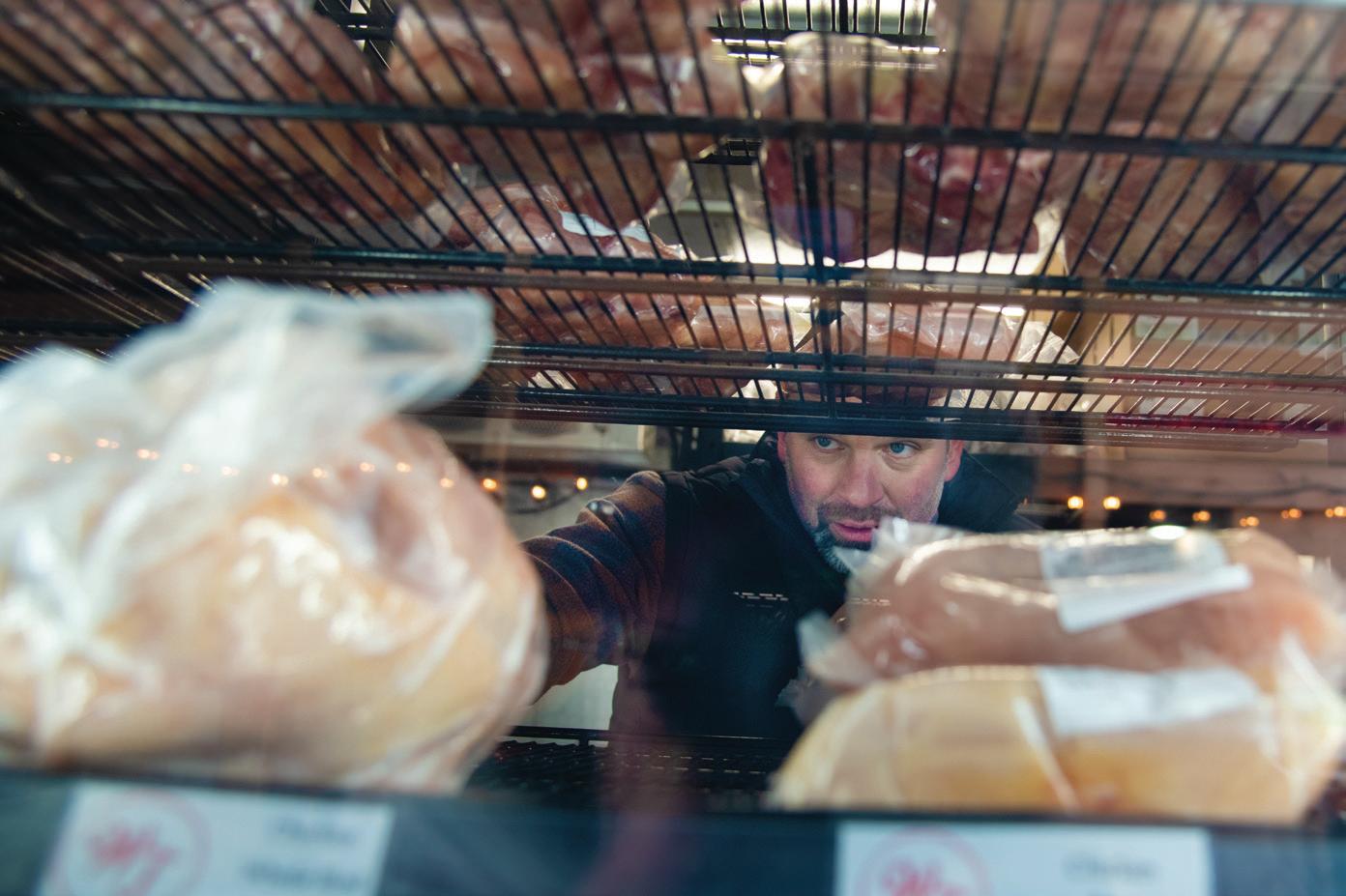
Flashback to Texas, mid-1980s. Smith shared with his audience of co-op leaders one of the defining moments of his life — and it wasn’t winning the Super Bowl with the Colts or playing for legendary coach Lou Holtz at Notre Dame.
He and his dad were checking on the cattle one sweltering day. They saw a nose just inches above the green surface of a swampy watering hole. It was a cow mired in mud after walking out to cool off in the 110-degree heat. Smith said the cow was probably in four feet of water, about 20 feet out. He and his dad were going to have to wade out together, go under the water to tie a rope around her belly, and pull her out with the truck.
From his adolescent point of view, he described mosquitoes the size of robins and the scummy pond teeming with water moccasins. Sensing Smith’s apprehension, his dad turned to him right before they walked into the water. “He looked at me with his blue eyes and said, ‘Son, we can’t just leave her here.’
“When you’re 9 or 10 years old, that doesn’t sound like a very profound statement. But all these years later, I’ve learned — and it’s something that we need to re-learn as a society, that young people need to know: There are some things that must be done. You can’t log out and log back in tomorrow. And that has shaped my life.”
Out they waded, and down they went. Each took a side. His dad fished the rope under the cow’s belly. In the muck, Smith found his dad’s hand and brought the end of the rope up. Together, they saved the cow.
Returning to raising cattle and chickens at WonderTree rekindled a passion for farming in Smith. And, like a lot of living things, he said, the farm continued to grow.
“Once we started producing eggs, people started asking if they could buy them, and we started selling. Everything we were making for ourselves, other people were interested in, and we had surplus. So, we just sold it. In the truest sense — not the government branding sense — but in
the truest sense, it is an organic venture,” he said. “The farm just organically came together.”
Before COVID-19 came along, WonderTree opened on Saturdays for an experience called “Farm Day,” inviting patrons out for horse rides and hayrides pulled by a red, white and blue painted Farmall tractor. “We just decided to make it a bit of an attraction. My daughter sells cotton candy, we have desserts, it’s kind of a festive environment,” Smith said. “We have horses and cows and goats and donkeys, dogs and cats.
“The main thing that we offer is an unregulated day in the country. We just say, ‘Come during our open hours. As long as you buy something, just be here. Enjoy it.’ You’d be surprised how a kid can be there for three hours and never ask their parents for a phone or a screen. That’s pretty remarkable.”
Farm Day now attracts some 300 to 400 people every Saturday. The farm also hosts field trips, birthday parties and group outings.

As the farm added more animals, the farm store grew. Other sustainable farmers in the area who share in the regenerative vision added dairy products, honey, elderberry syrup and other organically grown goods to the meats and eggs raised at WonderTree. Today, the farm has thousands of regular customers.
“We never intended to put a walk-in freezer over there,” Smith said,
• Born Aug. 9, 1977; Sherman, Texas; age 45
• Married with four children; lives in Zionsville, Indiana
• Attended Sherman High School (19911995); lettered in football, basketball and track. In football, he played quarterback, tight end, punter and kicker, and was a two-time Texas AllState selection.
• Attended the University of Notre Dame in South Bend (1995-1999); played in every game over the course of his four seasons as punter and field goal kicker. He ranks second at Notre Dame in career punting yardage with an average of 41.2 yards per punt. He graduated from Notre Dame in 1999 with degrees in theology and sociology.
• Drafted in the seventh round by the Indianapolis Colts (210 overall) in the 1999 NFL Draft; played 10 seasons (1999-2008) with Indianapolis; wore number 17.

• Signed with the Washington Redskins in 2009; played two seasons (20092010) in Washington; wore number
• Super Bowl Champion (XLI) (Feb. 4, 2007) with the Colts
• Named Pro Bowl Alternate three times.
• Punts: 691; punting yards: 24,500; punting average: 43 yards.
3. On Saturdays from late spring through October, WonderTree Farm hosts “Farm Day” — a time customers can enjoy a day in the country, including hayrides chauffeured by the popular former Indianapolis Colts punter-turned-farmer. continued on next page Photo provided by Hunter Smith Photo courtesy of WonderTree Farmcontinued from page 23
pointing out how things have changed in his original barn. “We never intended this kind of store.”
He originally elevated the barn’s floor off the center aisle — where the pot-bellied stove and restrooms now sit — because he thought he’d eventually add an office there. “I put in 16-by-16 doors thinking, ’I’m kind of clumsy; I don’t want to drive a tractor into the doorframes.’ Turns out that they’re easier for people to drive through to buy meat through the winter,” he said. “There are just so many things here that were unintentional that ended up being good ideas.”
One change, however, wasn’t as serendipitous. The farm’s namesake, the WonderTree itself, gave up the ghost. Smith said it was thinning when they bought the land. Finally, it put out no leaves at all. Last summer, the massive, venerable tree was cut down. Smith left its huge stump for a future, yet undecided project. As one would expect of a regenerative farmer, Smith milled the limbs and branches into boards which he’s now using to side a new multi-use barn on the farm. “It’s special for it to live on and remain part of the fiber of the farm,” he said of the mighty tree.
Today, the farm may have as many as 100 cattle, depending on the season, as well as pigs, chickens and other

2280 S. U.S. 421
Zionsville, IN 46077
Tuesday: 10 a.m.-1 p.m.
Thursday: 3-6 p.m.
Friday: 10 a.m.-1 p.m.
Saturday: 10 a.m.-1 p.m.
(Begins in May/June and runs through the last Saturday in October)
livestock. Along with the original 22 acres, he now leases over 120 more nearby — as his sociology experiment in “how to raise good kids” evolved into a new full-time career he loves. What’s more, he said Jennifer also loves it, and the kids do, too. “They have all been pretty much raised in it. And in their work ethic and in their general hardiness, they’re beginning to understand why this was a really good idea.”
Though Smith’s father died in 2020, Smith said his dad did get to see the farm at its beginning. “He got to see his influence on me. He was very proud.”
But he said his dad was from a generation that questioned why anyone would farm if they didn’t have to. “They were in a real sweet place in American development when you had
plenty of food, you had plenty of farmers. You didn’t need to farm for your community, necessarily. Of course, I say, we’re getting back into a time we’re going to need people to farm.” Whether his children follow him into farming isn’t important, Smith said. “What matters most to me is that whatever they do in life, they take the lessons we’ve learned here — the work ethic that has been modeled for them and that they’ve taken part in and the character that just comes from the kind of work we do — and apply it to whatever they do. There’s no pressure on my children to be a farmer, only pressure to be tough, and good and hardworking.”
With the morning farm store hours over and those big barn doors closed, Smith sat before the pot-bellied stove
Through WonderTree's website, sign up for its emailed newsletter that's filled with information about the farm and its products. The newsletter includes Hunter Smith's thoughtful, entertaining and insightful essays about the farm and his views on agriculture, faith, family, traditions, nature ... you name it.
FOR MORE INFORMATION: WonderTreeFarm.com info@wondertreefarm.com 317-732-8930

for a time out, black kitten on his knee, before heading out to continue work on the new barn, sided with the wood from the WonderTree.
A few hours earlier, Smith was sacking groceries and helping customers carry bags to their SUVs and minivans. Some 40 vehicles passed through the barn that day. The winter drive-thru, an idea Jennifer first proposed, made it easier for their customers and was needed to keep the farm open during winter.
WonderTree Farm is on the scrimmage line between an encroaching Greater Indianapolis suburbia and the flat farmlands to the north. To its south, east and west are new housing developments and golf courses, some that will eye-rollingly use “Farms” in their name. But WonderTree is an honest-to-goodness working farm — with an emphasis on “honest” and “goodness,” and “working,” too.
“I am not an ex-football player playing cowboy in the suburbs,” Smith said. “We have real ground, real stocking rates, real production and 4,000 customers that buy from us who live within 10 miles of my farm. So, it’s very much a real thing.” He has noted that he feels God gave him the ability to play football for a while so he could come back to farming like this.

“And,” Smith added, “we actually believe that this is the future of agriculture. We believe that the best way to have sustainable food systems is for people to raise food and sell to the people around them. Maybe 40 farms like mine and larger in central Indiana, selling to people who live all around them, is a good idea. Then, if I get run over by a beer truck, the guy next door can pick up the slack while my kids are coming in underneath me, or we’re selling the farm or something like that. You won’t have these situations where some giant
plant has 12 people get COVID-19 and they have to euthanize 3 million hogs. We think that’s pretty unsustainable … call me crazy.
“A more sustainable food system would be one where you had a myriad of farms like ours that produce for the people around them. And those people who live around them also have gardens, laying hens, and a milk cow … that’s how my grandparents lived. People think that’s crazy, but it’s really not. If you live in a neighborhood, and you have a 16th of an acre in your backyard, some tiny little plot, you’d be shocked how many vegetables, fruits and eggs you can produce,” he continued. “I just think more responsibility placed on individuals and on local farms is probably how my kids and grandkids end up producing food.”
Richard G. Biever is senior editor of Indiana Connection.Planting season is at hand for many of Indiana’s roughly 94,000 farmers. While you prepare to plant the crops that keep the world fed, Indiana Electric Cooperatives reminds you to keep safety in mind — especially when working around electricity.
According to the U.S. Department of Labor Occupational Safety and Health Administration, 62 farm workers are electrocuted each year in the United States. “Farm worker deaths and injuries can be prevented by practicing some simple electrical safety measures around the farm,” said Jon Elkins, vice president of safety, training and compliance at Indiana Electric Cooperatives.
Here are some helpful safety tips for farmers to keep in mind this season:

• Make sure farm equipment like planter arms and sprayers safely clear overhead power lines. Some clearances may have changed since the last time you entered the field. The tall equipment can easily become entangled in power lines and pose an electrocution risk. Keep a minimum of a 10-foot distance from power lines in all directions. Consider asking your electric cooperative to move overhead
lines around buildings or frequently used pathways.
• Keep a safe distance from power poles and guy wires. If your equipment strikes and damages a guy wire or power pole, do not try to fix it yourself. Call your electric cooperative to make the repair.
• If your farm equipment becomes entangled with power lines, call 911 immediately. Keep others away and remain calm. DO NOT try to exit the equipment or touch someone who has had electrical contact. If you must exit the equipment for life-threatening reasons, jump out and away from the equipment and make sure to land with your feet together and touching. Then, shuffle at least three tractor lengths away with your feet touching. NEVER attempt to get back into or touch equipment that is in contact with a power line.
SOURCES: U.S. Department of Labor Occupational Safety and Health Administration, Iowa State University Extension and Outreach, National Agricultural Statistics Service, Virginia Cooperative Extension, U.S. Department of Agriculture, Evergy, Kansas State University
Controlled burns can be a beneficial way to clear a field of debris. But they must be planned carefully and correctly. Here are safety tips if power lines are nearby:
• Mow and remove vegetation at least 15 feet around any pole and apply fire retardant to the area as recommended by the manufacturer prior to burning. Do not directly spray or treat the pole.
• Do not allow the fire to cross under power lines in large areas. Smoke contains carbon particles which can conduct electricity. If the concentration gets high enough around power lines, an electrical discharge from the line to the ground, similar to lightning, can occur. When working below power lines with water hoses, extreme care must be taken to keep water streams out of overhead lines. Water will conduct electricity and the water stream will act as a conductor.
• Should a burn get out of control and endanger poles or other electrical equipment, call 911 immediately.
After high school and college, Pete Byrum worked a couple of jobs, but no job felt like a permanent “home” until he took a position just beyond his high school’s front doors at his hometown electric cooperative. It was a place his dad had encouraged him to look into since high school.
At age 28, Byrum came home to Portland, to Jay County REMC, in 2011. He left his previous bricklaying and asphalt jobs behind and took a position as a groundman — one who assists the journeymen linemen. As is often the case with newly hired groundmen, within the year, Byrum began the four-year apprentice lineman program on his way to becoming a lineman himself.


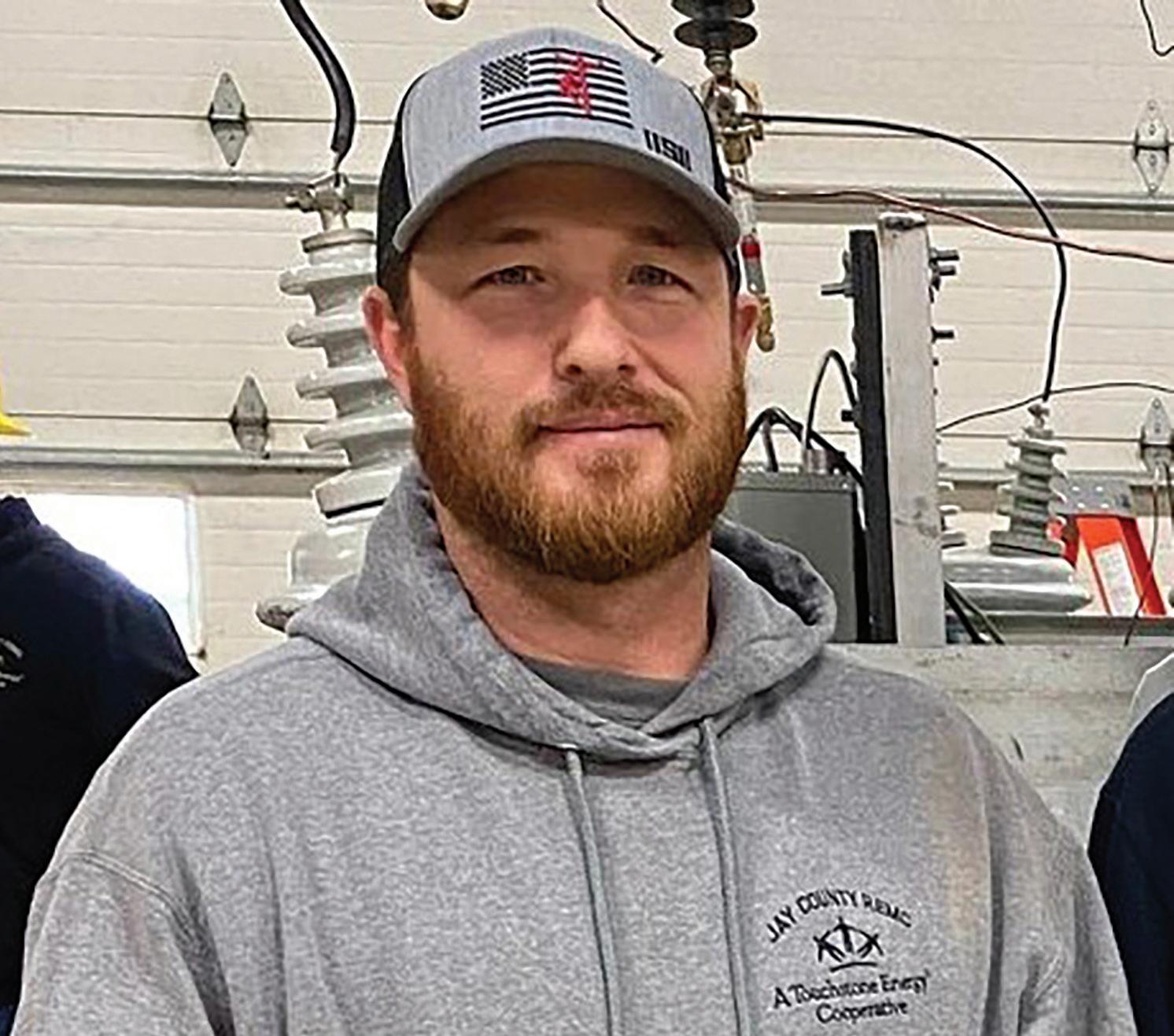
Now 40 years old, Byrum is the REMC’s operations manager. He oversees six linemen and two apprentices plus a warehouse/ purchasing manager and the staking technician. He reports directly to the CEO.
“Once I started here, I knew this was more than likely going to be the place I retire from,” he said. “I definitely love the rural feel, the way they interact with the members and what all the REMCs are about. I like the kind of work we do, keeping people’s power on. We’ve got the best jobs in Jay County.”
Byrum went to college, he admitted, to play baseball. His degree in human resources was more of a bonus. But he was more interested in working outdoors, so when he was offered a job as a bricklayer, he took it. Once he and his wife started a family, the need for better insurance and benefits led him to an asphalt company in Ohio. Not long after, his dad told him about an opening at the REMC.
Byrum said he enjoyed being a lineman. “Line work is not a job for everybody. But there’s a lot of pride
in it. And the type of work — always working outside — just went along with what I like to do.”
In 2019, the metering department had an opening. He joined that department while maintaining line duties.
When the operations manager moved to another position at the REMC, Byrum applied and moved into that position. The transition, he said, was easy, because of the people he works with. “We have a really great group of employees.”
His first jobs out of college were just that, he said, jobs. “This is a career, compared to a job.”
Winter Storm Elliott packed a punch in December, but Hoosier Energy’s 18 member cooperatives stood strong and experienced minimal disruptions.

The system absorbed a recordsetting blow as temperatures dropped nearly 50 degrees in a span of 12 hours on Dec. 22, 2022, and 2 to 3 inches of snow fell across the service territory. Overall, the average system temperature for Dec. 22-23 was 4 degrees below zero Fahrenheit with heavy wind. With a maximum sustained wind speed of 36 mph and gusts in excess of 50 mph, every aspect of generation and transmission was monitored.
Along the way, Hoosier Energy set an all-time system peak of 1,828 megawatts (MW), which was also coincident with the Midcontinent Independent System Operator’s (MISO) peak. That peak, which broke the previous record of 1,714 MW set in January 2019, came during the hour ending at 7 p.m. on Dec. 23.
MISO issued a “Maximum Generation Emergency Warning” to let power plant operators know that the supply of electricity on the grid was getting tight on Dec. 23 at 5:06 p.m., requiring all units to be on standby and ready if called upon.
Natural gas was flowing and available at Hoosier Energy’s Holland Energy Plant in Illinois but was not called upon. The
Worthington Generating Station was also forced on during the event on Dec. 23, with other units on standby.
There was also a call for load management procedures, with 16 of 18 cooperatives participating in the Hoosier Energy Emergency Capacity Portal, but by 9 p.m. that night, the Maximum Generation Emergency Warning was terminated.
Hoosier Energy-owned assets saw no reliability issues, with a limited number of interruptions at delivery points. Ongoing preparation and collaboration have prepared Hoosier and its member cooperatives well for these bouts, and for others in the future.
Poison hemlock has become a popular topic of conversation over the past few years. This invasive and noxious weed is so problematic that in 2022, the Dubois County Soil & Water Conservation District (SWCD) and the Dubois County Weed Board partnered together on a poison hemlock outreach campaign that included educational videos, ads, public service announcements and mailings to Dubois County landowners. The two entities plan to continue this outreach with the hope that landowners won’t let up when it comes to getting poison hemlock under control.

You’ve probably seen poison hemlock (Conium maculatum) on the sides of roads, field edges and creeks. It is classified as an invasive plant and a noxious weed, in part because it is highly toxic to humans and livestock if ingested. The rapid spread of this weed in the area has shown that more landowners need to be aware of this threat — and the right way to deal with it.
According to Emily Finch, Invasive Species Specialist with the Dubois County SWCD, while several landowners try to manage poison hemlock, not all of these efforts are effective in controlling it. That’s because hemlock needs to be controlled earlier in the year, before plants even flower. To understand why, you have to understand the weed.
Poison hemlock is a biennial, meaning it only lives for two years before producing seed and dying. The only way to eliminate infestations is to prevent that seed production. Hemlock plants start as short basal rosettes with fern-like leaves. Then, in their second year of life, plants will send up a flowering stem, also called bolting, in spring/early summer (around May/June in southern Indiana).
These flowering plants can be quite large, anywhere from 3 to 10 feet tall. Because hemlock is in the carrot family, it produces abundant umbrella-shaped clusters of white flowers, often compared to the flowers of Queen Anne’s lace, aka wild carrot. To help distinguish the plants, remember that hemlock blooms before Queen Anne’s lace, lacks any hairs on its stems or leaves (a common feature of Queen Anne’s lace), and has distinctive purple splotches on its stems and often on the base of large leaves as well.
There are a few options to control poison hemlock, as long as plants are not allowed to flower and produce seed. In fact, hemlock seeds have a very short duration in the soil, and many populations can be eradicated with just a few years of effective treatments — a short timeframe for most weed control. Small populations can be removed by hand, either by digging the plants up or severing the root with a sharp shovel, but be sure to wear gloves to avoid contact with plant toxins. Cutting or mowing the plants is not effective unless repeated regularly through the summer because plants will resprout readily. In fact, mowing after plants have produced seed is one way that infestations have spread through the area.
Herbicides are the most efficient way to control large areas, and several chemicals are effective, including glyphosate or triclopyr and 2,4-D products, which unlike glyphosate, have the benefit of not harming grasses. All of these options also are available in aquatic-safe formulations for use near open water creeks and ditches. Whatever product you choose, make sure to read and follow all label directions. And, according to Finch, the earlier you can spray hemlock, the better!
“Spring planting is a busy time for everyone, so why not avoid that and spray your hemlock plants in February or March instead? The hemlock rosettes are green that time of year, plus the plants are smaller, so you’ll use less herbicide,” Finch said. For best results, Finch suggests only spraying on days above 50 degrees Fahrenheit.
Wait longer and you may run into problems. As hemlock plants start bolting and prepare to flower, they also get harder to kill. If herbicide rates aren’t increased when spraying these plants, they may only be knocked back or stunted temporarily. And according to Kenny Eck with Purdue Extension Dubois County, once they flower, there is no point in spraying them.
“Spraying a hemlock plant is just a revenge killing. It makes you feel good, but it does nothing to control it as it will still go to seed,” Eck said. Eck recommends checking out options in the Purdue Extension/SICWMA publication, “Poison Hemlock.” This publication, along with more resources on identifying and controlling hemlock, is available at www.duboisswcd.org.
Looking
hemlock? Try contacting your local Soil & Water Conservation District (https:// wordpress.iaswcd.org/contact-yourlocal-swcd/). Several area SWCDs have an Invasive Species or Resource Specialist that can provide free site visits and technical assistance about poison hemlock control. This year, Dubois County landowners involved in livestock production may also be eligible for funding to control poison hemlock and other noxious weeds. For details, call 812-482-1171, ext. 3, or email duboisswcd@gmail.com.
ZLINE has recalled three sizes of a gas range due to a serious risk of carbon monoxide poisoning. The oven of the gas ranges can emit dangerous levels of carbon monoxide while in use, posing a serious risk of injury or death.

Recalled ranges include 30-inch, 36-inch and 48-inch models (RG30, RGS-30, RGB-30; RG36, RGS-36, RGB-36; and RG48, RGS-48, and RGB-48). ZLINE has received 44 reports of carbon monoxide emission, including three reports of consumers seeking medical attention.
The ranges were sold in multiple finishes, including stainless steel, black stainless steel and DuraSnow (a cloudy steel finish), at Best Buy, Lowe’s, The Home Depot and other stores nationwide and online from February 2019 through December 2022 for between $2,300 and $6,900.
Contact: ZLINE at 888-359-4482; email at ZLINEKitchen@realtimeresults.net; or online at zlinekitchen.com/recalls or zlinekitchen.com and click on “Product Recalls” for more information.
Bissell has recalled cordless multi-surface wet dry vacuums — models 2551, 2551W and 25519. The circuit board inside the vacuum’s battery pack can overheat and smoke, posing a fire hazard. Bissell has received 66 reports of the vacuum smoking and emitting a burning odor; including five reports of the battery pack catching on fire, three of which resulted in minor property damage and one resulting in a burn injury.

The vacuums were sold at Walmart stores nationwide and from multiple online sources from January 2019 through November 2022 for about $360.
Contact: Bissell at 855-417-7001, or online at bissell.com/recall or bissell.com and click on “Product Recalls” at the bottom of the page for more information.
Sakar International has recalled three models of multi-purpose helmets: Credhedz Lizard, Crayola Dry Erase and Tony Hawk helmets. The helmets do not comply with federal safety standards for bicycle helmets and can fail to protect the wearer’s head in the event of a crash. They were sold at Big Lots, Ollie’s Bargain Outlet and other stores nationwide and online from November 2020 through October 2022 for about $30.
The Tony Hawk multi-purpose helmets were sold in various colors and have black straps and a black buckle. Credhedz Lizard multi-purpose helmets are black with a green plastic lizard on the top of the helmet and have black straps and a black buckle. Crayola Dry Erase multi-purpose helmets are white and have black straps and a black buckle and are sold with a five-pack of markers.

Contact: Sakar at 800-592-9541; email at support@sakar.com; or online at vivitar.com/pages/ recalls or vivitar.com and click on “Recalls” at the bottom of the page.
As a service to our readers and to promote electrical safety, we want to keep you aware of recent recall notices provided by the U.S. Consumer Product Safety Commission. Full details of the above recalls, and many more, can be found online by visiting www.cpsc.gov/en/recalls.

